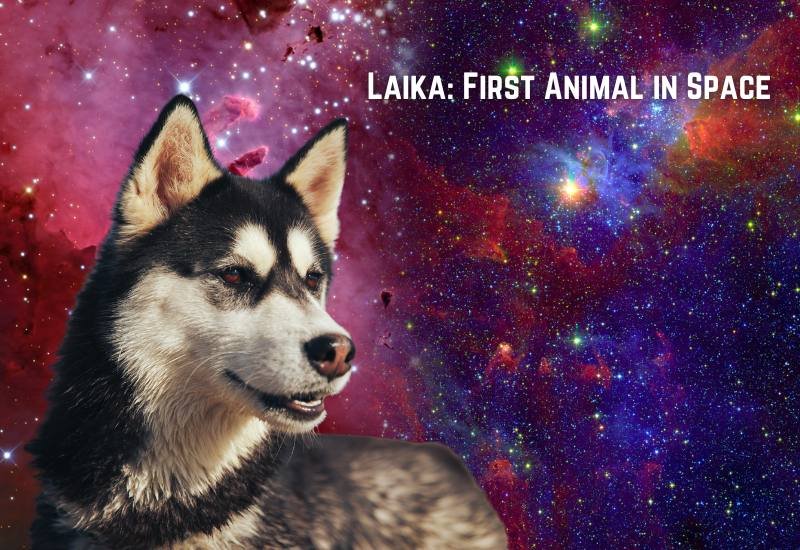Laika: The First Animal in Space
Ronit Agarwal
. 3 min read
The first living creature to orbit the Earth was a dog named Laika. On November 3, 1957, the Soviet Union sent a dog by the name of Laika into orbit aboard the satellite known as Sputnik 2. Bark is where the name Laika comes from; it's a word that originates in the Russian language. Laika is also the name of a breed of sled dog that is popular in Russia, but these dogs are not related to the Laika that was used in space missions. So, while we remember the extraordinary feat of Laika and her journey into space, let's also embrace the wonders of online chat and connect with fellow space enthusiasts.

Origin and Naming of Laika: The First Animal to Orbit Earth
Kudrayavka, which translates to "Little Curly," was the name that was given to the black-and-white mutt that became Laika. Her later name, which comes from the word for "barker," came about as a result of her barking during an interview on the radio. (There are instances in which the media in the United States refers to her as Muttnik.) According to NASA, Laika tipped the scales at approximately 6 kilograms (13 pounds) when she was ready to take off.
Dogs in Space: The Soviet Union's Canine Astronaut Program
To determine whether or not sending humans into space was even possible, the Soviet space program flew dogs into suborbital and orbital space during the 1950s and 1960s. During this time period, the Soviet Union carried out a number of missions that included passenger spots for at least 57 canine companions. Due to the fact that some dogs have flown more than once, the total number of dogs in space is lower. The majority were successful, and the few that did not make it through the test did so primarily due to technical difficulties that they encountered.
Tragic Story of Laika, the First Dog in Space
She succumbed to the effects of stress and overheating somewhere between five and seven hours into the journey. It was not until October 2002 that the real circumstances surrounding her passing became known to the public; prior to that time, officials had stated that she had passed away due to a lack of oxygen. Oleg Gazenko, a senior Soviet scientist who was involved in the project, made these statements in 1998 during a press conference in Moscow. "We did not gain sufficient knowledge from the mission to make the decision to put the dog to death".
Preparations and Conditions Surrounding Laika's Fateful Space Mission
Laika was reportedly placed inside the satellite on October 31st, 1957, which is three days prior to the beginning of the mission as stated in a document from NASA. Since the temperatures at the launch site were extremely low at that time of year, a hose that was connected to a heater was utilized in order to keep her container at a comfortable temperature. Before the launch, it was decided that two assistants would be in charge of maintaining a constant watch on Laika.
Remembering Laika, First Dog in Space and an Icon of Space Exploration
Due to her historic journey, Laika is now considered to be one of the most famous dogs in the world. Laika, a little pooch that was probably a husky-terrier mix, was the first to go into orbit, on Sputnik 2, and was the first cosmonaut to really win public affection. Other dogs flew on suborbital flights throughout the decade, but Laika was the first dog to go into orbit and was the first cosmonaut to win public affection. Her slender face, which was framed by golden stars, rockets, planets.
Conclusion
Laika's journey into space was a significant milestone in the history of space exploration, but it also came at a great cost. The circumstances surrounding her death sparked a great deal of controversy, and it remains a tragic reminder of the ethical considerations that must be taken into account when sending living creatures into space. Despite the controversy, Laika's bravery and contribution to the advancement of space exploration will not be forgotten. Her legacy lives on, as she continues to be remembered as a symbol of the courage and sacrifice that are necessary to push the boundaries of human knowledge and exploration.
More Stories from
Space Weapons: Concerns and Global Stances
This article discusses the concept of space weapons and the reasons why they are developed, as well as the concerns surrounding their deployment.
Becoming an Astronaut: Requirements, Training, and Duties
This article discusses the qualifications needed to become an astronaut, the training program they undergo.
Exploring the Final Frontier: A Glimpse into the World of Space Research
From probing distant galaxies with space telescopes to charting the potential for human life on other planets, this article provides a glimpse into the evolving field of space research.
Connected Cosmos: Embracing the Future of Space Exploration with Video Chat
Discover the potential for human colonization of other planets, breakthrough propulsion systems, and the expansion of our knowledge of the universe through space-based astronomy.
Chandrayaan-3: India's Ambitious Lunar Mission for Scientific Exploration
Chandrayaan-3, India's third lunar mission led by ISRO, aims to overcome past challenges and demonstrate soft landing capabilities on the Moon.








.png?width=40&aspect_ratio=1:1)


